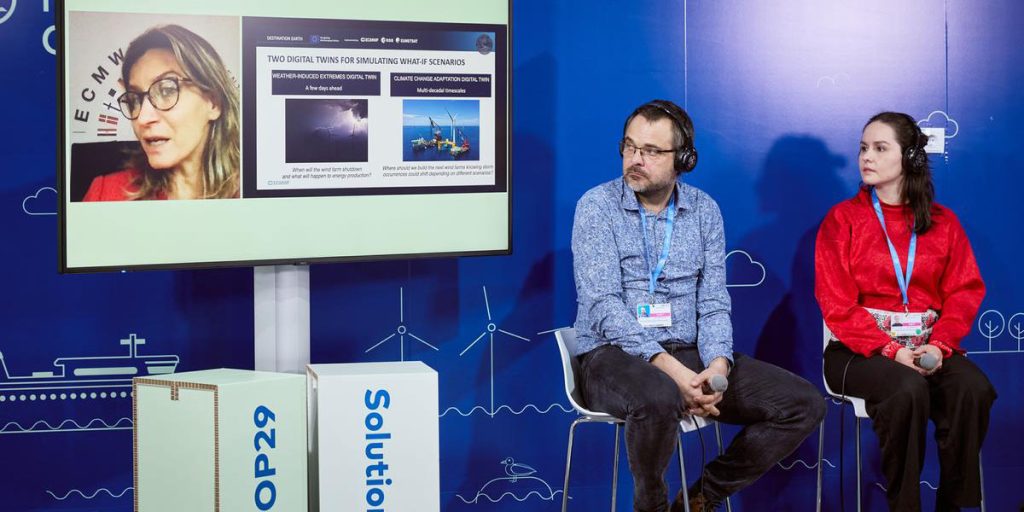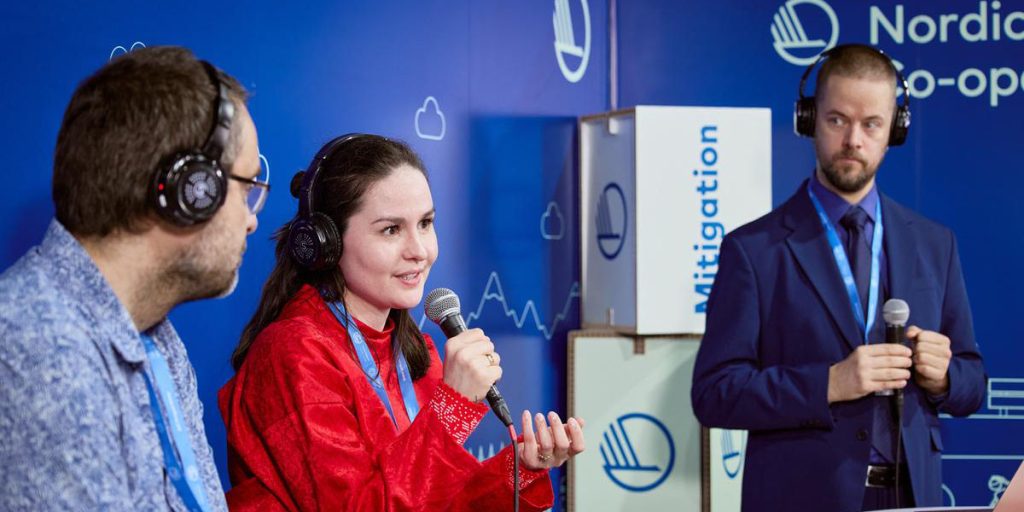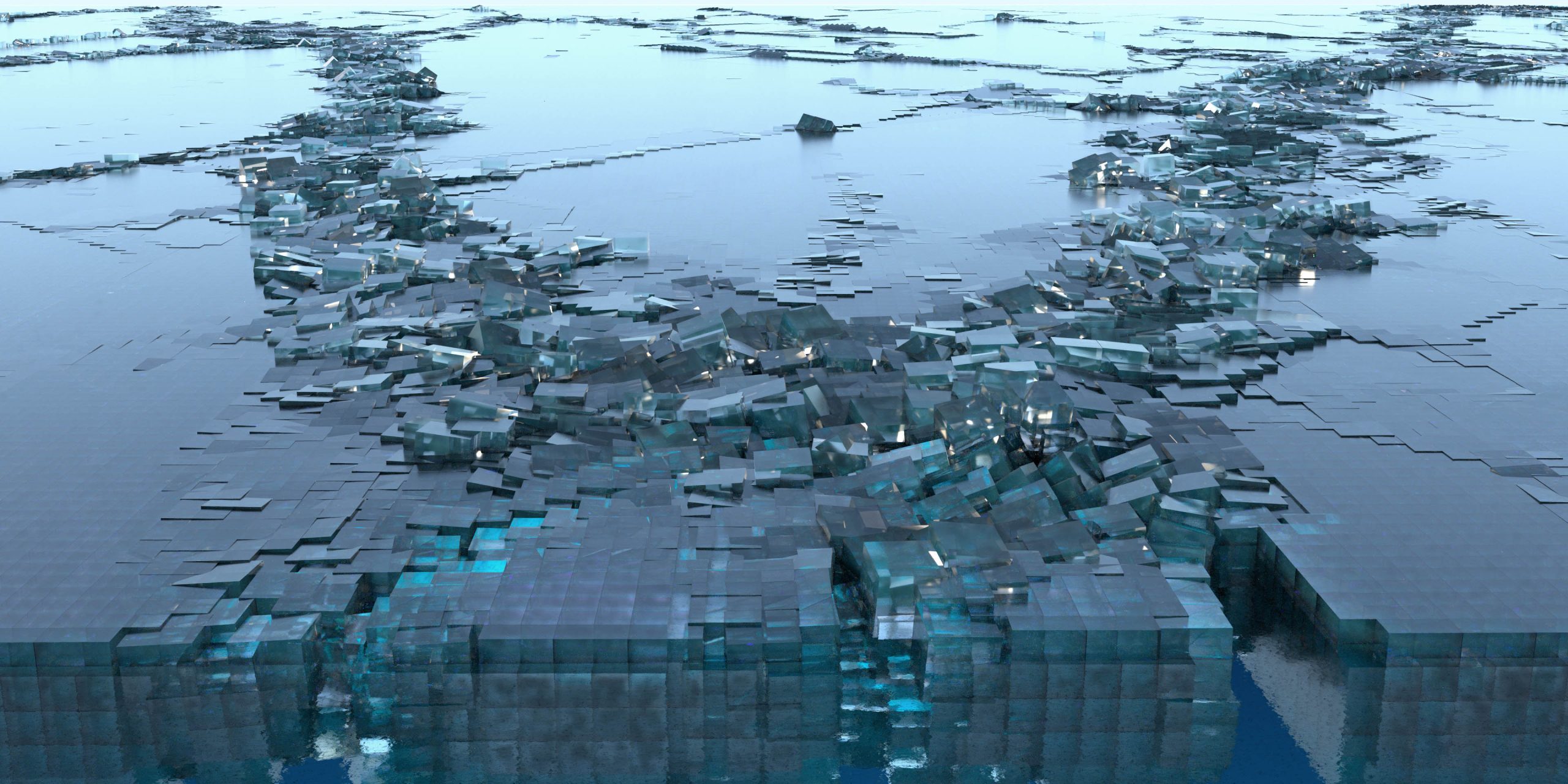Panel at COP29: Digital twins supporting climate change adaptation
The Arctic region is one of critical hot spots for climate change, where changes like ice melting and rising sea levels have irreversible global impacts. At the United Nations Climate Change Conference in Baku in November 2024, a panel discussion focused on how digital twins can support climate change adaptation efforts. As an example, the digital twin modeling sea ice in the Arctic and Baltic Seas was highlighted.
In a panel discussion held at the UN Climate Change Conference COP29 Nordic Pavilion, titled “Global and Regional Approaches to Cryosphere and Related Climate Challenges,” experts explored how changes in sea ice affect ecosystems, ocean currents, and coastal communities worldwide. Digital twins were presented as valuable tools that offer earth system projections and forecasts to aid adaptation and mitigation of the impact of climate change.
Digital twins are virtual models that replicate real-world systems. They enable researchers to simulate and predict future scenarios and help decision-makers make informed choices based on reliable projections.

“Digital twins, such as those we develop in the EU’s Destination Earth initiative, allow us to explore what-if scenarios of the evolution of the Earth system. What sets Destination Earth’s digital twins apart is the combination of unprecedented computing capacity and high levels of interactivity. This allows for tailored simulations to user’s specific needs – a level of customization not possible in current prediction systems, while providing high-resolution Earth-system information globally,” said Irina Sandu, Director of Destination Earth at the European Centre for Medium-Range Weather Forecasts (ECMWF).
Special Advisor Avijâja Rosing-Olsen from the Ministry of Agriculture, Self-Sufficiency, Energy and Environment of the Government of Greenland emphasized the importance of hearing and understanding the people who are the most affected by changes in the cryosphere.
“Our government has decided that the process of developing Greenland’s nationally determined contribution to the Paris agreement should be very focused on engaging the local communities and making sure that their voices are very strongly heard in this process,” she said.

A digital twin of Arctic and Baltic sea ice
The panel discussion was organized by the Nordic Cryosphere Digital Twin (NOCOS DT) project, led by CSC. NOCOS focuses on sea ice in the Arctic, Nordic, and Baltic regions. It examines various possibilities and hazards of sea ice and the marginal ice zone, and how changes in the cryosphere impact transportation, marine spatial planning, and other activities in ice-covered areas. These models and diagnostics can also be applied to other regions of the world with similar sea ice conditions.
During the panel, Sea Ice Scientist Till Soya Rasmussen from the Danish Meteorological Institute (DMI) shared examples of how the NOCOS DT models are already proving useful.
“NOCOS DT aims at supporting offshore activities for mariners and local communities with tools for risk assessment and planning by producing user-oriented services. With the inclusion of the Climate DT data, enhanced future planning will be enabled based on the expected improved quality of the data,” said Rasmussen.

Collaboration and technology have huge potential
CSC coordinates the NOCOS DT project and develops models for simulating sea ice using high-performance computing. The other project partners are the meteorological institutes of Finland, Sweden, Norway, and Denmark, as well as the Tallinn University of Technology (TalTech). The project is funded by the Nordic Council of Ministers. NOCOS DT is linked to the European Commission’s flagship program Destination Earth, which aims to model a digital version of the entire planet.
CSC also leads a partnership developing Destination Earth’s Climate Change Adaptation Digital Twin project (Climate DT), which evaluates the impacts of climate change, and the Biodiversity Digital Twin (BioDT), developing applications related to biodiversity. The LUMI supercomputer, located in CSC’s data center in Kajaani, Finland, plays a key role in Destination Earth, providing computing power and AI capabilities needed for the development of advanced models.
“Time is not on our side, and neither is the state of the world, but with our efforts and collaboration, technology has huge potential”, the panel’s moderator Tero Aalto from CSC concluded the discussion.

More information

Tero Aalto
Tero Aalto is the programme manager of the Nordic Cryosphere Digital Twin, and user engagement expert for Destination Earth Climate DT and TerraDT.
